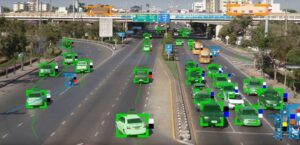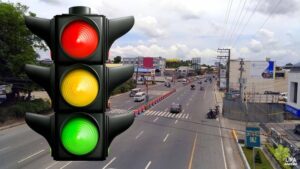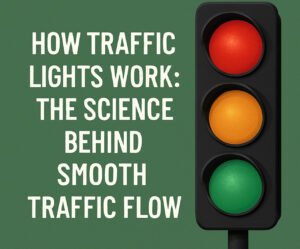Picture this: you’re cruising through an intersection, and suddenly you see a traffic light sign that’s flickering, a red traffic light that won’t change, or worse, a blinking red traffic light in every direction, leaving drivers confused. These moments aren’t just frustrating—they’re dangerous. Traffic light failures can lead to accidents, traffic congestion, and even road rage. So why do these failures happen, and more importantly, how can we prevent them? Know more..
What Are Traffic Light Failures?
A traffic light failure is any situation where the signal doesn’t function as intended. It can mean a complete blackout, lights stuck on one color (often a red traffic light), or constant flashing, such as a blinking red traffic light that turns the intersection into a makeshift stop sign scenario.
Often, a malfunctioning traffic light sign adds to the confusion. Clear, working signage is critical, especially when the light system fails. With poor visibility or unclear signals, intersections quickly turn chaotic.
Common Causes of Traffic Light Failures
1. Power Outages
The most common cause is simple: no electricity. When storms, car crashes, or grid issues disrupt power, traffic lights go dark. In these cases, every light might turn into a blinking red traffic light, signaling drivers to treat the intersection as a four-way stop.
2. Wiring and Hardware Malfunctions
Worn-out wiring, short circuits, or damaged control panels can cause failures. Sometimes the red traffic light stays on endlessly, or one direction never gets a green. Faulty bulbs or LED panels are also culprits.
3. Software or Timing Errors
Traffic systems rely on programming. If that programming goes haywire, signals may skip cycles, get stuck, or flash incorrectly. A mistimed traffic light sign can disrupt an entire traffic pattern.
4. Environmental Factors
Rain, snow, heat, and humidity all take their toll. Over time, weather exposure can corrode circuits and damage infrastructure, leading to inconsistencies—especially a persistent blinking red traffic light due to moisture-related shorts.
5. Human Error
Sometimes the issue is as simple as a technician programming the light incorrectly, or forgetting to reset the system after maintenance. The result? A signal that’s stuck on a red traffic light during rush hour, creating traffic chaos.
Risks and Consequences
Traffic light failures aren’t just technical issues. They carry real-world risks:
- Accidents: When a traffic light sign is unclear or malfunctioning, drivers make risky moves.
- Traffic jams: A stuck red traffic light can bring peak-hour traffic to a standstill.
- Pedestrian danger: Without clear signals, crossing roads becomes a gamble.
- Emergency response delays: Congestion caused by signal failures slows down ambulances and fire trucks.
A blinking red traffic light might be better than nothing, but it requires every driver to understand and follow the rules—which doesn’t always happen.
How to Prevent Traffic Light Failures
1. Regular Maintenance and Inspections
Preventative maintenance is critical. Technicians should inspect control cabinets, wiring, and bulbs regularly. Scheduled maintenance can identify issues before a red traffic light gets stuck or a system goes dark.
2. Backup Power Systems
Many cities now install battery backups or solar-powered systems. In the event of a power outage, these systems keep intersections functioning. Instead of a complete failure, you may see a blinking red traffic light, at least offering some order.
3. Upgrading to Smart Traffic Systems
Smart traffic systems use sensors, cameras, and AI to adjust signals in real-time. They can detect malfunctions and self-correct or alert technicians instantly. That means less time with a useless traffic light sign or a dead intersection.
4. Weatherproofing and Durable Materials
Using weather-resistant materials for traffic light signs and internal components helps reduce damage from environmental exposure. Sealed cabinets and corrosion-resistant wiring go a long way.
5. Central Monitoring and Alerts
Cities can use centralized control rooms that monitor every red traffic light and intersection. The second something malfunctions, a system alert allows quick response. Less downtime means fewer chances for driver confusion or accidents.
What to Do During a Traffic Light Failure
If you ever approach a faulty signal, here are the basic rules:
- A blinking red traffic light = treat it like a stop sign. Full stop, then proceed when safe.
- No lights at all = four-way stop rules apply.
- A stuck red traffic light = wait for a reasonable time. If it’s clear it’s broken, treat as a four-way stop but proceed with caution.
- Watch for pedestrians and cyclists—they may be unsure of what to do too.
And remember: never speed through an intersection just because the lights aren’t working. You never know who else is making a risky move.
Community Involvement and Education
While technology is improving, human behavior plays a huge role. Communities need to educate drivers on what a blinking red traffic light means and how to respond safely. Schools, driving schools, and city outreach programs should include signal failure scenarios in their teaching.
Additionally, reporting faulty traffic light signs or signals should be easy. Apps or hotlines that allow citizens to alert traffic authorities can help speed up repairs.
Future of Reliable Traffic Signals
The future lies in automation and AI. Integrated systems will soon predict hardware failures before they happen, reroute traffic based on real-time conditions, and communicate directly with connected cars. A world where traffic light signs adjust to weather and traffic volume dynamically isn’t far off.
And yes, even blinking red traffic lights will get smarter—eventually indicating not just a stop, but why it’s happening, and what drivers should expect next.
Conclusion
Traffic light failures may seem like minor glitches in the grand scheme of urban life, but they have real, often serious consequences. Whether it’s a traffic light sign that isn’t clear, a red traffic light that won’t switch, or a confusing blinking red traffic light, each malfunction is a potential hazard.
The good news? With proactive maintenance, better infrastructure, and smarter systems, we can prevent many of these failures before they cause damage. As our roads become more connected and intelligent, the chaos of unpredictable intersections can fade into the past. Until then, a little caution, some common sense, and a keen eye on the traffic light sign ahead can keep us all safer.





